Ryokans – Traditional Japanese inns
19.09.2018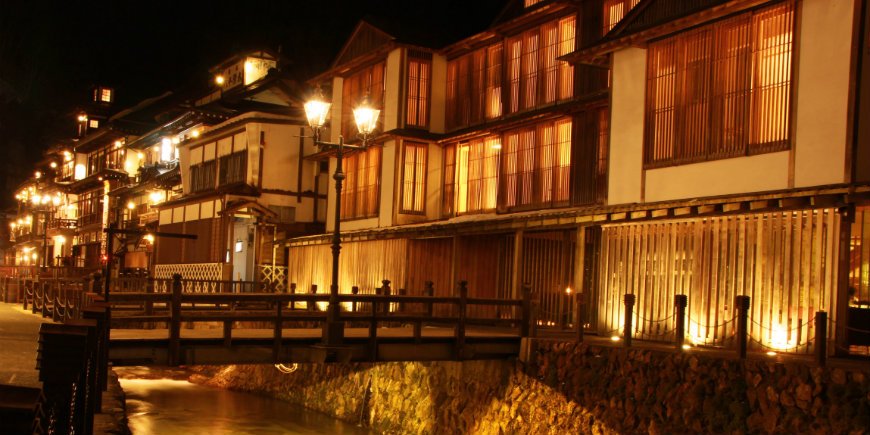
Japan is a fascinating destination,
where you will encounter traditions and customs quite unlike those you are used to in the UK.
Stay at a ryokan and discover the Japanese culture and Japanese customs at close quarters.
What is a ryokan?
A ryokan (旅館) is a traditional Japanese inn where you can experience ancient Japanese traditions and a unique atmosphere.
It’s not only a place where you spend the night, but also a place where you have the opportunity to really immerse yourself in Japanese culture and learn the meaning of expressions such as tatami, yukata, kaiseki and onsen.
All ryokans are different and so are the experiences they offer. But one thing is for certain, having stayed there, you will return home a whole lot wiser about Japanese culture and hospitality.
How did ryokans come about?
Ryokans date back to the 8th century, and the first ryokan – Nisiyama Onsen Keiunkan in Yamanashi, founded in 705 AD – is also considered to be the world’s first hotel.
However, it was not until much later – during the Edo period (1603–1867) – that ryokans become really popular. During this period, Japan’s economy flourished, roads were built and more and more ryokans emerged along them to accommodate the many merchants and samurai travelling across the country.
Today, there are more than 50,000 ryokans in Japan. Ryokans vary in size, style, level of luxury and price.
What characterises a ryokan?
You don’t have to have visited a ryokan to know that you’ve arrived at a traditional Japanese inn. You’ve probably seen them many times in films – or at least something like them: The traditional Japanese buildings, sliding doors made of rice paper, the geisha-inspired look and the beautiful Japanese gardens.
You’ve seen it, but experiencing the ryokan ambience in person is something else entirely.
Dress code
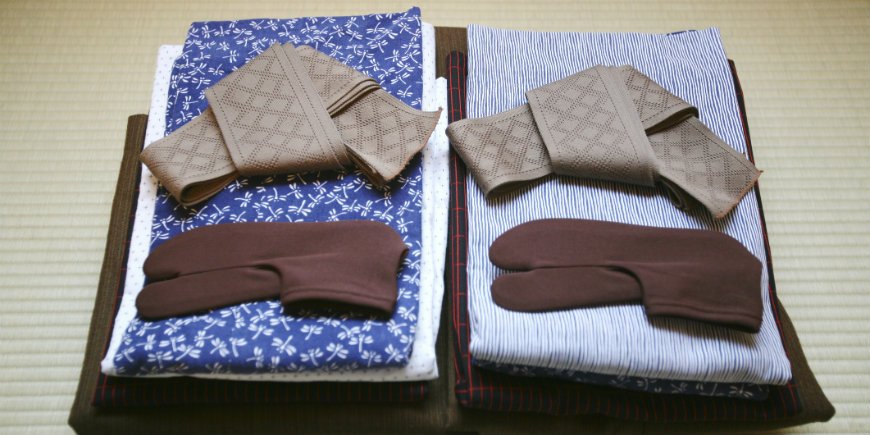
Stepping into a ryokan, you are stepping into Japanese traditions.
Shoes are not worn inside.
They will be replaced by slippers, and you can change out of your normal clothes into a yukata – a cotton robe that resembles a kimono. Embrace the experience and put the comfortable robe on – it can be worn for all activities during the day. In some onsen towns, it is even normal to walk around the town in your yukata with geta (wooden sandals) on your feet. Be sure to fold the left side of the yukata over the right side before tying the belt – obi – around the waist. If you tie it the other way, it brings bad luck, as that is the way the dead are dressed in a kimono.
Décor
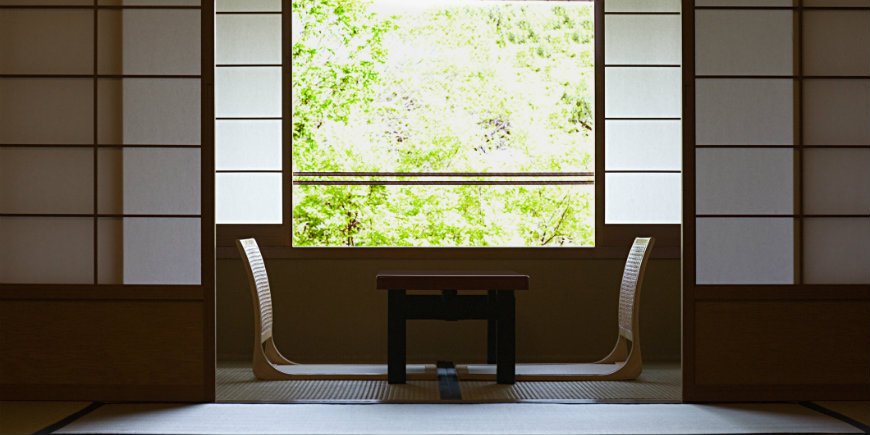
Your first thought as you enter your room in the ryokan is likely to be that there is something missing. Because where is all the furniture?
The décor is minimalist, and your room is furnished somewhat more sparsely than you might be used to from hotels.
The floor in your room is covered with tatami. Tatami are mats made from rice straw, and you should also remember to take off your slippers and walk around in socks or bare feet. There will also be a low table with correspondingly low, legless chairs (zaisu) or cushions (zabuton) – just like in the movies!
You might also wonder where the bed is. The traditional Japanese futons that you will sleep in at night (not to be confused with those we know from home) will be taken out for you when bedtime is approaching.
You then will probably begin to wonder whether the sliding doors to your room, which are made of thin rice paper (shoji), can really can keep the sound out when it’s time to sleep. But they can because, as mentioned above, peace and tranquillity reign throughout the ryokan. It is a real zen experience – an interesting part of your stay.
The food
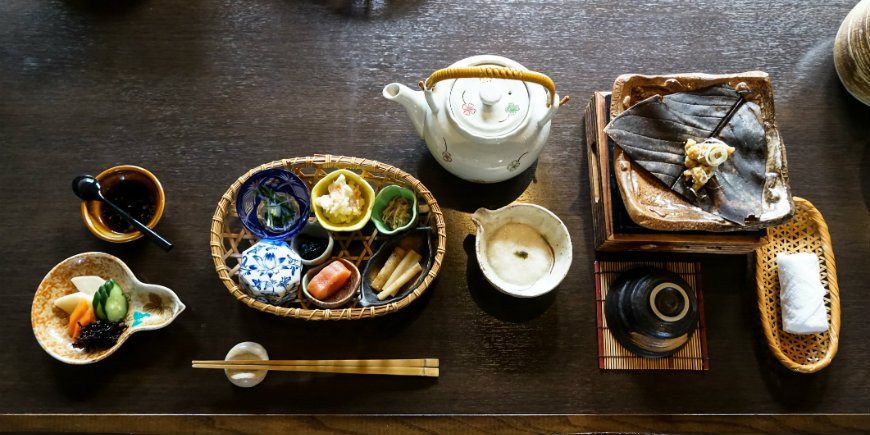
Food may or may not be included in your stay. But it is often possible to have an authentic Japanese dining experience either in the morning or the evening.
The food is typically served in a dining room or in your own room for a more private experience.
In the morning, a traditional Japanese breakfast is served featuring different seasonal dishes, such as a local miso, tofu or rice porridge. In some places, it is also possible to have a Western breakfast.
In the evenings, kaiseki is often served – a traditional multi-course meal consisting of between 6 and 15 seasonal dishes. The dishes are in perfect harmony with each other in taste, texture and appearance.
If you come here with an open mind, you will leave with some truly wonderful dining experiences. It’s an excellent way to become acquainted with some of Japan’s exquisite specialities, which you might not try otherwise.
A tip: If the food is served at 6 pm, be sure to be there on time – and preferably a little before.
Onsen – hot springs
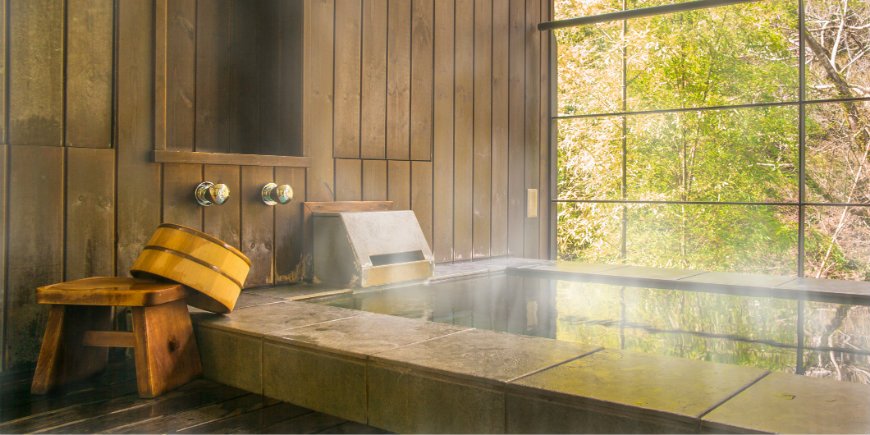
Bathing is an important part of ryokans – and often a somewhat confusing experience for non-Japanese guests.
Ryokans are often located near hot springs, or onsen (温泉), which have emerged in areas of volcanic activity. The onsen has become a classic element of many ryokans.
Indoor and outdoor pools are warmed up by the hot springs, and in places without an onsen, classic Japanese bathing experiences are often still offered.
A typical bathing experience lasts no more than 15 minutes at a time as it can become VERY hot. So feel what your body can stand. And remember to drink water.
As with so many other things in Japan, the experiences in the onsen are characterised by traditions, and some knowledge of the etiquette in Japanese hot springs will take you a long way.
Etiquette in the onsen:
- Wash thoroughly (scrub yourself!) before using the bath. In many places, you will be given stool to sit on while you wash in a shower that is so close to the floor that standing is impossible – which is not the intention anyway. Your hair must be put up as hair should not come into contact with the water.
- Swimwear is not typically allowed, hence the gender-segregation of the baths. If you find this too much, there are also some private baths you can use.
- Tattoos are not that common in Japan due to their associations with organised crime. Although more common today – especially among foreign visitors – tattoos are still not allowed in some onsen. It is a good idea to check before arrival.
Want to experience a Japanese ryokan?
In Japan, there are lots of different cosy ryokans that are worth a visit. Whether you visit a smaller, family-run ryokan or one of the slightly larger ones, you’ll experience a side to Japan you don’t get to see when staying at regular hotels.
If you would like to enjoy an authentic Japanese experience, you can stay at a ryokan on one of our extensions on our tours in Japan.
TourCompass – From tourist to traveller
